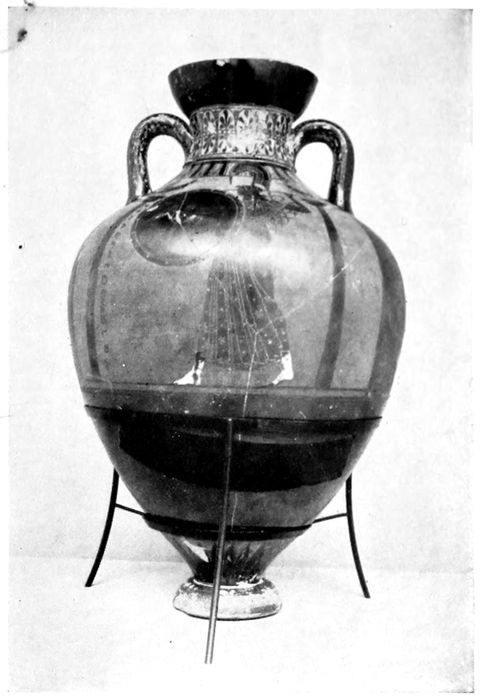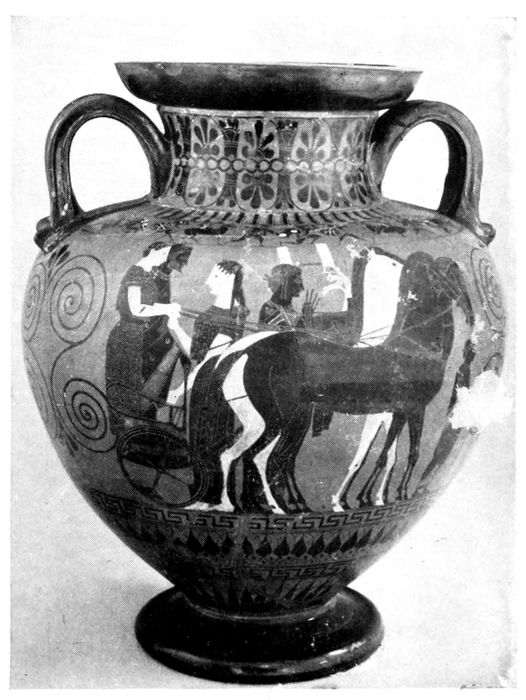Transcriber’s Note:
The cover image was created by the transcriber and is placed in the public domain.
SHAPES
OF
GREEK VASES

SHAPES OF GREEK VASES
The appreciation of beautiful form, with the ability to create it,which was characteristic of the Greek people, is nowhere betterillustrated than in the shapes of their pottery. These vases—the jars,dishes, and cups made for household and religious use—were designedwith intelligent skill to serve their purpose in the most effective fashion,and are valued for their fine shapes no less than for their interesting andbeautiful decoration.
The following reproductions of the most important shapes in use amongAthenian potters during the sixth and fifth centuries B. C. will showwith what care the relation of the height to the width and the proportionof the parts to the whole were designed with a view to harmoniouseffect, and how skilfully the forms of the neck, the mouth, and the foot,and the position of the handles were planned for practical use.
The vases have been selected where possible from the collection inthis Museum; but when a certain shape was not represented here orconspicuously better examples were available elsewhere, vases in othercollections have been included. Unless otherwise stated the vases hereillustrated are in this Museum.
5AMPHORA. Two-handled jar for holding provisions.

Black-figured type with heavy lip and cylindrical handles. The decoration is usually painted in panels, back and front, the rest of the body being black.

Panathenaic amphora given as a prize in the games at Athens.

Black-figured type with curving lip and ribbed handles. The decoration extends over the surface of the vase.

Black-figured amphora of the same general type as the preceding, but broader and heavier.

Amphora with short neck and long body. The form of the handles is copied from metal technique.